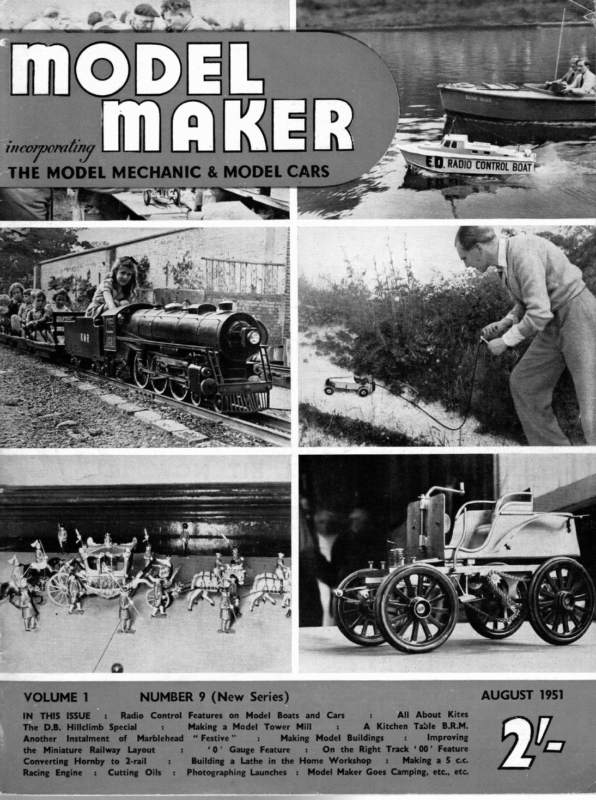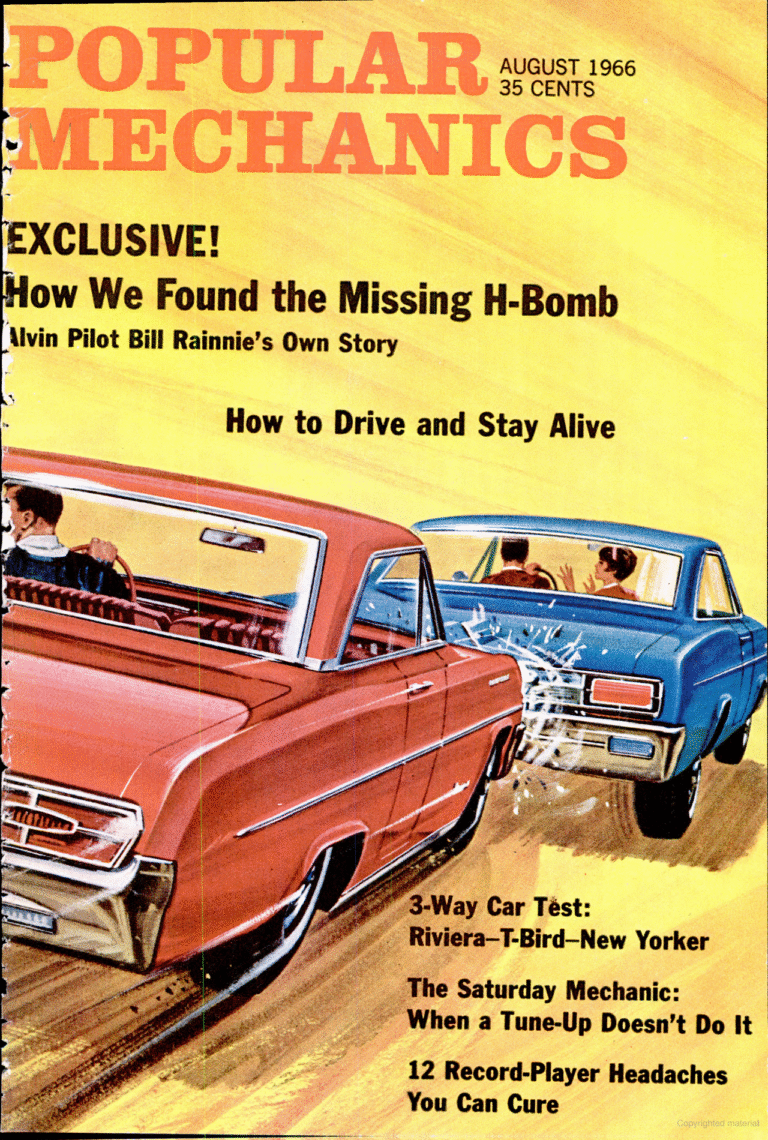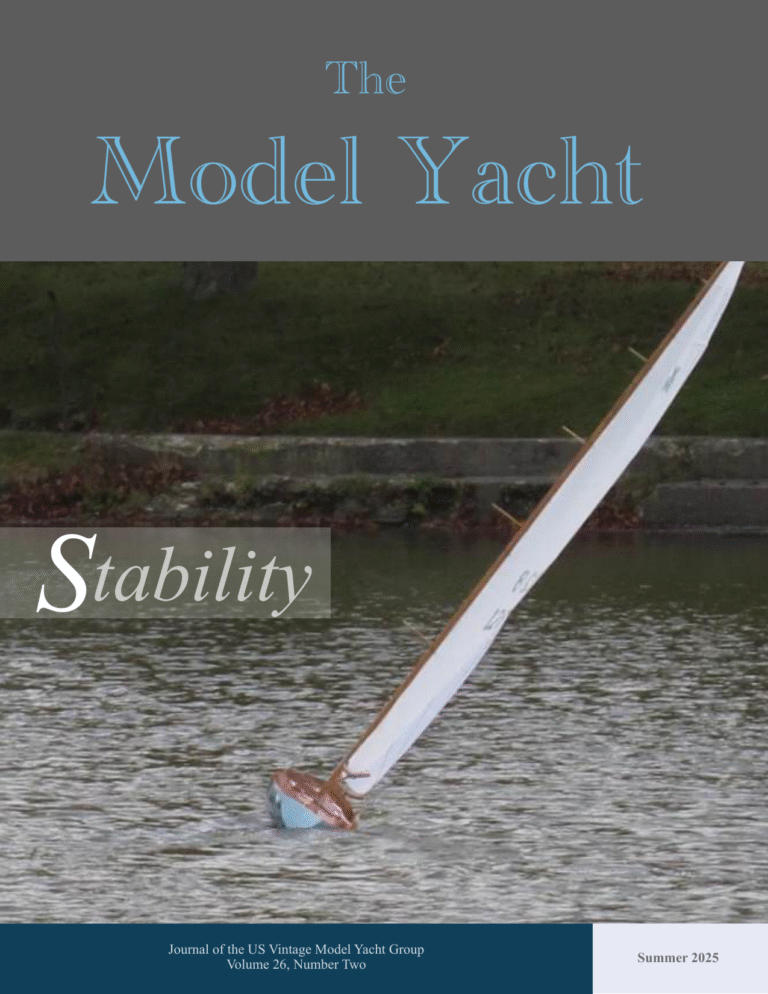- Festive, W. J. Daniel’s New Marblehead Design. Part IV (Plan available in US VMYG Store)

MODEL W. J. DANIELS’ FESTIVE NEW MARBLEHEAD DESIGN 230) 62 SAIL PLAN FESTIVE Part IV deals with casting of the lead keel, and making the necessary moulding boxes; Spars and Sail- making; finishing of the Deck. Earlier instalments have appeared in Model Maker as follows: SPINAKER 28 Part I (May): Building board, size reduced backbone, moulds, lines, and progress to “‘in frame” stage. Part II (June): Planking the deck hull, building up the fin, beams, fixing the deck. Part III illustrating (July): A photofeature in planking, fin, points backbone and ribs. Back numbers these issues can these offices, of any be obtained price 2/- or all per of from copy, plus 2d. postage. Full-size lines are _ available through Model Maker Plans Service, price 7/6 post free, or 9/- if required to be despatched rolled in stout card tube. EFORE varnishing the inside of the hull it should be thoroughly cleaned up removing all surplus glue, etc. Before the deck is permanently fixed the mast step and stern tube for rudder must be made and fitted in position. Lead Keel While the deck is being prepared the lead keel and fin appendages have to be given consideration. You must at this point make up your mind if you intend to steer by vane or quadrant. gap. The procedure is to draw another line } in. away parallel to the lead line and cut so as to leave both lines showing. The piece that is for the lead pattern can then be planed to the lead line leaving it slightly full to allow for shrinkage. The joints of the layers will make it apparent if you have this face truly square. The piece that will form the deadwood of the fin can also be planed to the line and a + in. piece glued If the former is to be selected you must attach layers to bring the depth down to 44 in. or 5 in. in the case of quadrant steering. HANDLE S ae il pnw The remainder of the fin can be glued up and shaped. It will be obvious that if the pattern for the lead keel is cut exactly at the lead line shown on the drawing the wood removed by the saw will leave a cere wn ew ewe ene ea ee fa nee ee = y ee Jf, [i=31\ as 14 ee, 1) KEEL an | | BOLT H 548 by KEELSON 1 a 1} KEEL | BOLT ! ee
August 1951 on to fill the gap. After the keel is cast and finished up it can be placed in position. The keel bolts are now passed through it and given a tap to mark their position. The holes can then be drilled right through the backbone. Make the bolts of 1% in. drawn brass rod. Brass wing nuts can be obtained and these should be arranged as illustrated with a handle for carrying. The keel pattern should be given a coat of turps and varnish and papered very smooth. The smoother the surface the less finishing will be The simplest way to obtain the lead keel is to get it cast from your pattern at the foundry, but as we are building the model for the purpose of instruction and the satisfaction of having done it all the following is the procedure. Casting Box _ It is necessary to make a casting box. This really required for the lead casting. 1s two half boxes each with no lid or bottom. Each has a fillet of about 2 in. square beading around the inside of the upper and lower edges. These are to prevent the moulding sand from falling out. The half boxes should be fitted with locating lugs so that they go together exactly when assembled. One side should have three holes along the joint about 1 in. dia. One half box should be laid on a flat surface and filled with moulding sand, the latter being packed as hard as possible. The pattern is now offered to the box and the outline marked. Sand is now dug out to enable the pattern to be fitted in half-way. By continually putting the pattern in and noting where it is touching you will set it to a dead fit. Now sprinkle either brick dust or parting sand over the surface of sand and pattern. The other half box is now placed in position and filled with sand, the latter being packed tight and then levelled off flush with the top edge of box. The top box is now lifted off when you will have Right: The planked hull with deck beams fitted. The inside has been varnished or under coated to ensure a watertight finish, and prevent any rotting of the wood through water shipped through the hatch when sailing. Right (lower picture) : The planked hull with fin fitted, the pattern for keel (for use with Vane steering) has been cut away, and the edges faced as instructed. Left : Diagram showing use of keel bolts to fix the carrying handle—a necessary fitting where weight begins to mount up, pack avoids any undue strains on the ull. 549 half of the impressing of the pattern in each box. It is much simpler to cast the bolt holes than to drill them, so in order to do this it is the practice to have short lengths of rod protruding top and bottom of the pattern at the bolt positions. These are known as core prints and they will make the impressions in the sand where the cores will be placed. The cores consist of rods the same length as from top to bottom of the core prints. These are blacked over a candle flame to prevent them from welding to the lead, and placed in their respective positions. It is the practice before removing the pattern from the box to pierce holes right through the sand to the pattern with a long hat pin. This will enable air to escape and avoid the possibility of blow holes. After removing the pattern three channels are cut from recess left by the pattern to the holes in the point of casting box. The boxes are now carefully placed together, securely held, and stood with the pouring holes uppermost. You will require about 25 per cent more lead than the finished casting. This must be melted in an iron pot. If the lead is old and inclined to be dirty the dross can be brought to the top and the lead cleaned by the application of a small quantity of sal ammoniac. The dross can be removed with a strip of flat wood. It is important that the lead should be at the right heat and this can be tested with an off-cut of your decking. It should start to char the wood in ten seconds. Now pour the lead through the centre hole until you see it rise in the other two holes. After leaving for a sufficient time to cool the boxes can be separated and the cores and runners removed and the lead keel given a finish with file and fine glasspaper. Deck Having carried out all the operations described the deck can be fixed. In cutting it to shape about % in. of fullness should be allowed as the curvature
MODEL VZZZ4ANSS by making the luff of the mainsail Left : Use of a gauge to mark the pin line on the deck and id Vo4$ I MAKER GAUGE dead straight and cutting the foot convex, the form of which must be a parabolic curve with its deepest point nearest the luff of thus ensure even alignment : take care of dividers will spacing. Right : Mast head details, showing metal head board, mainsail halliard. Note reduced taper where burgee will be flown. of the deck will tend to make it narrower. First, tack it on temporarily, and making gauge as illustrated, mark a line around the top face. This will enable you to get all the pins regularly over the rail. Go round this line with your dividers set at 14 in., and mark the position of the pins, so that they will be evenly spaced. A pencil line drawn round the topside will give the deck line, and it can be trimmed to this line. The deck can now be fixed permanently varnish being used to seal it. The deck can now be lined to represent planking. This can either be to the old fashioned straight lines or lines parallel to the deck edge as the modern fashion. The deck coamings and transom piece can now be fitted. These should have had a previous coat of varnish and after fixing the whole can be given a finishing coat. Spars The spars for Festive’s first suit will be mast, main boom, jib boom and spinnaker boom. The diameter of the mast should be 4 in. at the keel, $ in. in the centre tapering to 7% in. at head. The wood for this can also be obechi, or aircraft spruce. First plane it square to 3 in. and, choosing which side will be aft, the latter should be kept straight. Using this side as the base, mark off the points stated and with a spline draw the curve of the taper on the two sides and plane down to the lines keeping the spar in the square. The spar can now be made octagonal after which it is easy to glasspaper the spar round. When putting the ferrule on the heel of mast care should be taken to arrange the slot that fits over the mast step so that the straight side of the mast comes aft. The other spars can be produced in similar manner. Jib boom and spinnaker boom # in. parallel, the main boom should be 4 in. if a box-footed sail is used but need only be 7% in. if the sail is laced on the foot. Sails Perhaps of equal importance to a correctly designed and built hull is the cut and set of the sails. The most perfect airfoil is a flat triangular piece of cloth with the base held dead straight by a wire stay. It stands to reason that if a sheet is attached to the free corner, the cloth will, when held to the wind, assume a shape that will equalize the pressure over the whole surface. In the case of the mainsail however, it is necessary to reinforce the foot of the sail as well as the luff, and this necessitates cutting the cloth so that when the luff and foot of the sail is straight sufficient cloth is slack to allow the sail to take an efficient shape. The writer has found that the sail. The cloth should be pinned down to a flat surface. Mark the lead of the sail allowing enough for the hem. All sails should be hemmed at the leach. The jib should be true to plan. ; Having marked out and cut the cloth to pattern the leach of mainsail and leach and foot of jib should be first hemmed. This is best done on a sewing machine, in fact all should be machined as it is very difficult not to stretch the raw edges of the cloth. After hemming the binding must be applied. First fold the tape by creasing it over an edge and then fold in about an inch. Start at the clew of the mainsail, place the cloth in the folded tape and bring tne foot of the sewing machine down so that the needle pierces the inner edge. ‘Lhen lift the foot and place the cloth in the fold for about 6 in., whilst giving a pull to the tape. Lower the foot of the sewing machine and sew along the inner edge of tape until the tack is reached, then cut the tape. Start again from the tack of sail with a 1 in. fold, and proceed as before pulling the tape tight and feeding the cloth into the fold without stretching or creasing. Fold in an inch of tape at the finish. The jib should have a narrow strip of tape sewn on the flat from tack to clew to take the strain, the luff being taped as per mainsail. A second row of stitching should be run down the tape to keep it flat. The beginner will find that a flat spinnaker will give less complication than an attempt at a parachute one, the luff only being taped, the foot and leach being hemmed. The mainsail can either be laced to mast and boom or provided with hooks. In the case of the latter method a jackstay must be fitted. This consists of a wire passed through small screw-eyes placed at suitable intervals along the spars and fixed at the ends, the hooks on the sail being arranged to come intermediate between the screw-eyes. A head board of aluminium or other suitable material is sewn at head of mainsail. When sewing on the sleeves for the battens the opposite procedure to taping the sails must be adopted inasmuch as you must give a slight pull to Yoo the cloth and let the tape be as slack as possible. Do not use too small a stitch, and do not have the tension of the sewing too tight. Goose neck and mast band showing attachment of mainsail. 350 @!




